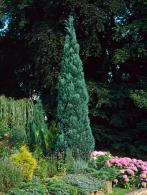Parrotia Persica Persian Ironwood
1. Add items to basket
2. Go to the basket
3. Enter your postcode in Delivery Price Check
Plant shape: Feathered
Pot size: 35 Litres
Plant ID: 9424 100
View plant size:Plant shape: Feathered
Pot size: 300 Litres
Plant ID: 12899 64
View plant size:To check delivery cost add your plants to basket, then you can type your postcode in our Quick Delivery Price Check.
Parrotia Persica or Persian Ironwood Tree
The Persian Ironwood tree is a most attractive addition to any garden. Very closely related to witch hazel, this is truly a tree for all seasons. Parrotia Persica has a peeling, greyish-coloured bark in winter. As spring arrives, its clusters of dark red flowers are small but abundant. Summer brings a glossy green foliage and in autumn, the Persian Ironwood puts on an amazing show of first yellow, then orange and finishing with a fiery purplish red hue before finally shedding its leaves to prepare for winter. Parrotia Persica looks great standing free in a lawn; or as a border with substance. As the name suggests, its wood is very strong, another common name being the Iron Tree.
A member of the Hamamelidaceae family, the Parrotia Genus is named after Dr Friedrich Wilhelm Parrot (1792-1841), a German traveller and naturalist who observed it while climbing mountains in the Northern Iran. The Persian Ironwood tree occurs natively only in a small portion of that area, near Azerbaijan and Northern Iran. Its native growth habit begins as a large shrub with plentiful stems; maturing to a low-branching round-headed tree. It can reach very tall heights, with a standard, single trunk that supports both erect and drooping branches. That character trait along with its sturdy wood made it popular for use as telephone poles, tool handles, fence posts and other lumber where strength is needed.
Parrotia are considered deciduous trees that have broad ovate leaves with progressive colour change through the summer and autumn. Its small but prolific red flowers emerge in late winter and early spring. Managed as a wide-spreading tree or large shrub, Parrotia Persica can grow to between 4-8m in height and wider than 8m in spread. It is hardy to Zone H7 in the UK, so it’s well suited to virtually all of our climate zones. A slow grower, it takes approximately 20-50 years for this beauty to reach its ultimate height.
The Persian Ironwood prefers full sun or partial shade, but its colours are most pronounced when provided abundant sunlight. Its aspect preferences include North, East, South, or West facing; and it will persist whether sheltered or exposed. Parrotia Persica likes moist, but well-drained soils across any or all soil textures as long as the site drains and holds nutrients with fairly consistent moisture. It prefers slightly acid to alkaline or slightly alkaline soils.
Plant shape: Bush
Pot size: 20 Litres
Plant ID: 2141 2
View plant size:PRE-ORDER
Pay to pre-order this plant for delivery estimated by 31.08.2025













